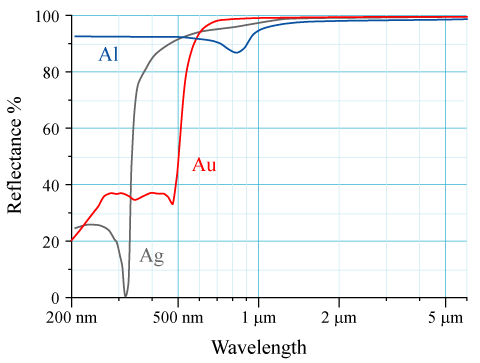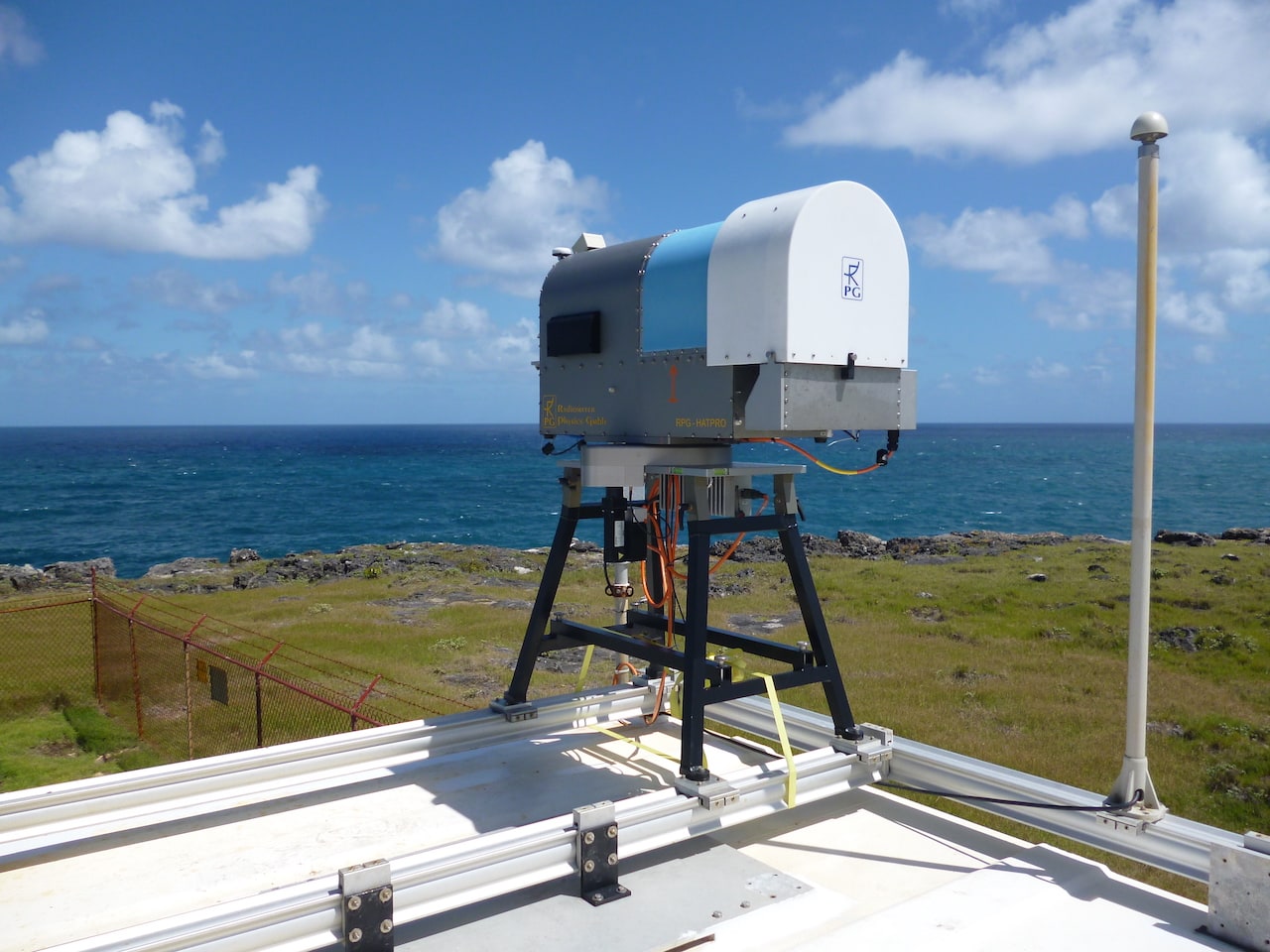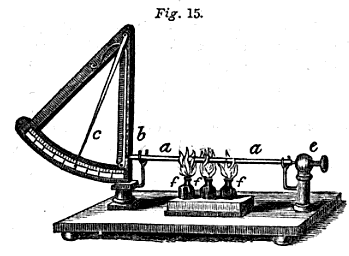|
Radiometry
Radiometry is a set of techniques for measurement, measuring electromagnetic radiation, including visible light. Radiometric techniques in optics characterize the distribution of the radiation's power (physics), power in space, as opposed to photometry (optics), photometric techniques, which characterize the light's interaction with the human eye. The fundamental difference between radiometry and photometry is that radiometry gives the entire optical radiation spectrum, while photometry is limited to the visible spectrum. Radiometry is distinct from quantum optics, quantum techniques such as photon counting. The use of radiometers to determine the temperature of objects and gasses by measuring radiation flux is called pyrometry. Handheld pyrometer devices are often marketed as infrared thermometers. Radiometry is important in astronomy, especially radio astronomy, and plays a significant role in Earth remote sensing. The measurement techniques categorized as ''radiometry'' in op ... [...More Info...] [...Related Items...] OR: [Wikipedia] [Google] [Baidu] |
Reflectivity
The reflectance of the surface of a material is its effectiveness in Reflection (physics), reflecting radiant energy. It is the fraction of incident electromagnetic power that is reflected at the boundary. Reflectance is a component of the response of the electronic structure of the material to the electromagnetic field of light, and is in general a function of the frequency, or wavelength, of the light, its polarization, and the angle of incidence (optics), angle of incidence. The dependence of reflectance on the wavelength is called a ''reflectance spectrum'' or ''spectral reflectance curve''. Mathematical definitions Hemispherical reflectance The ''hemispherical reflectance'' of a surface, denoted , is defined as R = \frac, where is the radiant flux ''reflected'' by that surface and is the radiant flux ''received'' by that surface. Spectral hemispherical reflectance The ''spectral hemispherical reflectance in frequency'' and ''spectral hemispherical reflectance in wavelength ... [...More Info...] [...Related Items...] OR: [Wikipedia] [Google] [Baidu] |
Radiometer
A radiometer or roentgenometer is a device for measuring the radiant flux (power) of electromagnetic radiation. Generally, a radiometer is an infrared radiation detector or an ultraviolet detector. Microwave radiometers operate in the microwave wavelengths. While the term ''radiometer'' can refer to any device that measures electromagnetic radiation (e.g. light), the term is often used to refer specifically to a Crookes radiometer ("light-mill"), a device invented in 1873 in which a rotor (having vanes which are dark on one side, and light on the other) in a partial vacuum spins when exposed to light. A common misbelief (one originally held even by Crookes) is that the momentum of the absorbed light on the black faces makes the radiometer operate. If this were true, however, the radiometer would spin away from the non-black faces, since the photons bouncing off those faces impart more momentum than the photons absorbed on the black faces. Photons do exert radiation press ... [...More Info...] [...Related Items...] OR: [Wikipedia] [Google] [Baidu] |
Microwave Radiometer
A microwave radiometer (MWR) is a radiometer that measures energy emitted at one millimeter-to-metre wavelengths (frequencies of 0.3–300 GHz) known as microwaves. Microwave radiometers are very sensitive receivers designed to measure thermally-emitted electromagnetic radiation. They are usually equipped with multiple receiving channels to derive the characteristic emission spectrum of planetary atmospheres, surfaces or extraterrestrial objects. Microwave radiometers are utilized in a variety of environmental and engineering applications, including remote sensing, weather forecasting, climate monitoring, radio astronomy and radio propagation studies. Using the microwave spectral range between 1 and 300 GHz provides complementary information to the visible and infrared spectral range. Most importantly, the atmosphere and also vegetation is semi-transparent in the microwave spectral range. This means components like dry gases, water vapor, or Precipitation#Hydrometeor definit ... [...More Info...] [...Related Items...] OR: [Wikipedia] [Google] [Baidu] |
Spectral Power
In radiometry, radiant flux or radiant power is the radiant energy emitted, reflected, transmitted, or received per unit time, and spectral flux or spectral power is the radiant flux per unit frequency or wavelength, depending on whether the spectrum is taken as a function of frequency or of wavelength. The SI unit of radiant flux is the watt (W), one joule per second (), while that of spectral flux in frequency is the watt per hertz () and that of spectral flux in wavelength is the watt per metre ()—commonly the watt per nanometre (). Mathematical definitions Radiant flux Radiant flux, denoted ('e' for "energetic", to avoid confusion with photometric quantities), is defined as \begin \Phi_\mathrm &= \frac \\ ptQ_\mathrm &= \int_ \int_ \mathbf\cdot \hat\mathbf\, dA dt \end where * is the time; * is the radiant energy passing out of a closed surface ; * is the Poynting vector, representing the current density of radiant energy; * is the normal vector of a point on ; * r ... [...More Info...] [...Related Items...] OR: [Wikipedia] [Google] [Baidu] |
Radiant Flux
In radiometry, radiant flux or radiant power is the radiant energy emitted, reflected, transmitted, or received per unit time, and spectral flux or spectral power is the radiant flux per unit frequency or wavelength, depending on whether the spectrum is taken as a function of frequency or of wavelength. The SI unit of radiant flux is the watt (W), one joule per second (), while that of spectral flux in frequency is the watt per hertz () and that of spectral flux in wavelength is the watt per metre ()—commonly the watt per nanometre (). Mathematical definitions Radiant flux Radiant flux, denoted ('e' for "energetic", to avoid confusion with photometric quantities), is defined as \begin \Phi_\mathrm &= \frac \\ ptQ_\mathrm &= \int_ \int_ \mathbf\cdot \hat\mathbf\, dA dt \end where * is the time; * is the radiant energy passing out of a closed surface ; * is the Poynting vector, representing the current density of radiant energy; * is the normal vector of a point on ; * ... [...More Info...] [...Related Items...] OR: [Wikipedia] [Google] [Baidu] |
Photometry (optics)
Photometry is a branch of optics that deals with measuring light Light, visible light, or visible radiation is electromagnetic radiation that can be visual perception, perceived by the human eye. Visible light spans the visible spectrum and is usually defined as having wavelengths in the range of 400– ... in terms of its perceived brightness to the human eye. It is concerned with quantifying the amount of light that is emitted, transmitted, or received by an object or a system. In modern photometry, the radiant power at each wavelength is weighted by a luminosity function that models human brightness sensitivity. Typically, this weighting function is the photopic vision, photopic sensitivity function, although the scotopic vision, scotopic function or other functions may also be applied in the same way. The weightings are standardized by the International Commission on Illumination, CIE and International Organization for Standardization, ISO. Photometry is distinct ... [...More Info...] [...Related Items...] OR: [Wikipedia] [Google] [Baidu] |
Photometry (astronomy)
In astronomy, photometry, from Greek '' photo-'' ("light") and '' -metry'' ("measure"), is a technique used in astronomy that is concerned with measuring the flux or intensity of light radiated by astronomical objects. This light is measured through a telescope using a photometer, often made using electronic devices such as a CCD photometer or a photoelectric photometer that converts light into an electric current by the photoelectric effect. When calibrated against standard stars (or other light sources) of known intensity and colour, photometers can measure the brightness or apparent magnitude of celestial objects. The methods used to perform photometry depend on the wavelength region under study. At its most basic, photometry is conducted by gathering light and passing it through specialized photometric optical bandpass filters, and then capturing and recording the light energy with a photosensitive instrument. Standard sets of passbands (called a photometric system) are ... [...More Info...] [...Related Items...] OR: [Wikipedia] [Google] [Baidu] |
Photometry Radiometry Units
{{disambig ...
Photometry can refer to: * Photometry (optics), the science of measurement of visible light in terms of its perceived brightness to human vision * Photometry (astronomy), the measurement of the flux or intensity of an astronomical object's electromagnetic radiation * A photometric study, sometimes also referred to as a lighting "layout" or "point by point" See also * Photogrammetry * Radiometry Radiometry is a set of techniques for measurement, measuring electromagnetic radiation, including visible light. Radiometric techniques in optics characterize the distribution of the radiation's power (physics), power in space, as opposed to phot ... [...More Info...] [...Related Items...] OR: [Wikipedia] [Google] [Baidu] |
Earth Remote Sensing
Remote sensing is the acquisition of information about an object or phenomenon without making physical contact with the object, in contrast to in situ or on-site observation. The term is applied especially to acquiring information about Earth and other planets. Remote sensing is used in numerous fields, including geophysics, geography, land surveying and most Earth science disciplines (e.g. exploration geophysics, hydrology, ecology, meteorology, oceanography, glaciology, geology). It also has military, intelligence, commercial, economic, planning, and humanitarian applications, among others. In current usage, the term ''remote sensing'' generally refers to the use of satellite- or airborne-based sensor technologies to detect and classify objects on Earth. It includes the surface and the atmosphere and oceans, based on propagated signals (e.g. electromagnetic radiation). It may be split into "active" remote sensing (when a signal is emitted by a sensor mounted on a satell ... [...More Info...] [...Related Items...] OR: [Wikipedia] [Google] [Baidu] |
Radiometric Calibration
Radiometric calibration is a general term used in science and technology for any set of calibration techniques in support of the measurement of electromagnetic radiation and atomic particle radiation. These can be for instance, in the field of radiometry or the measurement of ionising radiation radiated from a source. Ionising radiation Ionising radiation is non-visible and requires the use of ionisation detectors such as the Geiger Muller counter or ion chamber for its detection and measurement. Instruments are calibrated using standards traceable to national laboratory radiation standards, such as those at The National Physical Laboratory in the UK. Count rate measurements are normally associated with the detection of particles, such as alpha particles and beta particles. However, for gamma ray and X-ray dose measurements a unit such as the gray or sievert is normally used. The following table shows ionising radiation quantities in SI and non-SI units. Satellite sen ... [...More Info...] [...Related Items...] OR: [Wikipedia] [Google] [Baidu] |
Pyrometry
A pyrometer, or radiation thermometer, is a type of remote sensing thermometer used to measure the temperature of distant objects. Various forms of pyrometers have historically existed. In the modern usage, it is a device that from a distance determines the temperature of a surface from the amount of the thermal radiation it emits, a process known as ''pyrometry'', a type of ''radiometry''. The word pyrometer comes from the Greek language, Greek word for fire, "πῦρ" (''pyr''), and ''meter'', meaning to measure. The word pyrometer was originally coined to denote a device capable of measuring the temperature of an object by its incandescence, visible light emitted by a body which is at least red-hot. Infrared thermometers, can also measure the temperature of cooler objects, down to room temperature, by detecting their infrared radiation flux. Modern pyrometers are available for a wide range of wavelengths and are generally called ''radiation thermometers''. Principle It i ... [...More Info...] [...Related Items...] OR: [Wikipedia] [Google] [Baidu] |
Visible Light
Light, visible light, or visible radiation is electromagnetic radiation that can be perceived by the human eye. Visible light spans the visible spectrum and is usually defined as having wavelengths in the range of 400–700 nanometres (nm), corresponding to frequencies of 750–420 terahertz. The visible band sits adjacent to the infrared (with longer wavelengths and lower frequencies) and the ultraviolet (with shorter wavelengths and higher frequencies), called collectively '' optical radiation''. In physics, the term "light" may refer more broadly to electromagnetic radiation of any wavelength, whether visible or not. In this sense, gamma rays, X-rays, microwaves and radio waves are also light. The primary properties of light are intensity, propagation direction, frequency or wavelength spectrum, and polarization. Its speed in vacuum, , is one of the fundamental constants of nature. All electromagnetic radiation exhibits some properties of both particles and waves ... [...More Info...] [...Related Items...] OR: [Wikipedia] [Google] [Baidu] |






